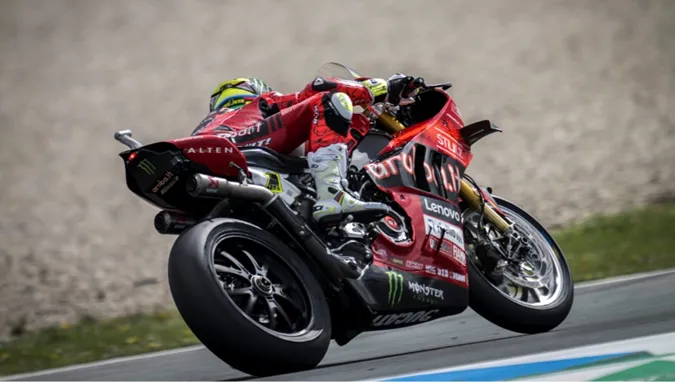

In the ALTEN Group, data and artificial intelligence experts specialize in adding value to client data by transforming it into valuable information to enhance performance and help clients stay ahead. This issue features insights from interviews with Maxime Boursin and Dorothée Delaunay, data and AI experts at Lincoln, and Stefano Cecconi, CEO of Aruba. They discuss how to integrate "sports + technology" to create "smart sports" in the context of digital transformation trends.

(The image: data and AI experts Maxime Boursin and Dorothee Delaunay)
In the age of the internet, data is the most valuable resource, and big data technology has thus become a focal point for collaboration across various industries, including sports. Today, in numerous sports competitions, the competition over data is becoming increasingly intense, with digital technology emerging as another arena beyond the field.
The winning formula
The amount of data generated in ball sports far exceeds people"s imagination. For instance, if 10 players use 3 balls for training, they can generate 7 million data points available for analysis in just 10 minutes. Professional sports have entered the era of digital competition, and relying solely on players" talent and coaches" experience is no longer sufficient. Big data,including the collection and analysis of athletes" performance, health data, and match data, are becoming indispensable tools for identifying strengths and weaknesses.
For the Olympics, a large volume of camera data will be used for security and traffic management, analyzing population movement to prevent congestion, guiding personnel and organizers to avoid security issues. Data such as hotel bookings and ticket reservations will also be used to understand the audience"s whereabouts and provide optimal transportation services during the Olympics. In sports events, converting data into insights involves focusing on athlete and equipment performance, analyzing game strategies, and addressing sports marketing issues like pricing, ticketing, and activities.
The use of data in the sports industry is rapidly increasing. Real-time or "hot" data is used for decision-making during games, while historical or "cold" data helps improve equipment or strategies. For example, to enhance the performance of rugby or soccer players, teams are using jersey sensor data to analyze movements and applying deep learning (using neural networks to process video) to analyze and classify data. In soccer, tracking players to collect their location and movement data helps create tactical visualizations, improve passing and shooting efficiency, and make decisions to enhance team performance. In tennis, tracking players on the court to analyze their emotions during key moments or against specific opponents helps coaches manage strategies.

(Image source: Official Olympic website)
Emotion Analysis: An Emerging Technology in Sports
Emotion analysis is a rapidly developing technology in the sports world in recent years. During crucial moments in a competition, athletes need to predict their emotions to better handle pressure. For example, if a runner is overtaken during a race, a negative emotional reaction might lead to a decrease in speed and performance. By predicting such responses, more proactive measures can be taken to maintain optimal performance.
Data and AI Algorithms: Assisting Team Formation
For instance, which player should we recruit? How should we position them? Artificial intelligence can help evaluate how players’ performances complement each other, identify players with tactical intelligence, and determine compatible playing styles and team dynamics. By analyzing data, AI can provide precise recommendations to optimize team composition and tactical strategies.
Ensuring Data Quality and Reliability
Ensuring data reliability is crucial for supporting decision-making. All data-related work must begin with the quality assurance phase, which is a fundamental prerequisite. Data, whether company-related or sports-related, is subject to the EU General Data Protection Regulation (GDPR). The data we use for algorithms is anonymized and committed to being destroyed after a certain period. Without user consent, we cannot use such data.

Stephano Cecconi, CEO of Aruba
Electronics and information technology are playing an increasingly important role in our lives. In recent years, these technologies have become crucial in enhancing vehicle performance. Data analysis has become the best tool for fleets and drivers to understand how to improve performance and achieve victory. At the same time, precise calibration of vehicle electronics not only ensures performance but also enhances safety and control.

In motorsports, technology has always played a role that is almost as important as that of the driver. In fact, if the vehicle is not performing, if it is running poorly, there is little the driver can do. Similarly, a very good vehicle can’t aspire to victory without an equally good driver. In other sports the balance is different, but even in disciplines that until recently had no easily identifiable technological aspects, we are beginning to see increasingly relevant contributions. It may be in the form of external support for the application of rules (VAR, hawk-eye, etc.), or research and development on protective materials and devices (helmets, clothing) or things that help to improve performance, like running shoes. Technology and sports, in short, go hand in hand, even when it is not as directly visible as in vehicle development.
Throughout the sports industry, and particularly in motor sports, digital transformation has allowed us to significantly increase the amount of data that can be collected and analyzed. This allows for a tremendous increase in the understanding of dynamics that can promote or prevent the achievement of maximum performance. For example, our teams now have a coach who lends not only psychological support and motivation. The coach is an analyst who, through the processing of videos collected from the sidelines and the detailed analysis of the course, is able to highlight where the rider or the bike gains or loses compared to the competitors – where there is a priority to intervene. A video with a “ghost” overlay of a faster rider gives a much quicker understanding of how the rider can improve, or how engineers can modify the bike. Doing all this faster than others can make the difference between winning or losing.
To achieve maximum results, it is essential to rely on partners who represent excellence in their field. All the companies that support us and share this adventure in motorsports have values similar to our own. Often, as is the case with ALTEN, we also collaborate in our core business, developing ever better technology and solutions for our customers.